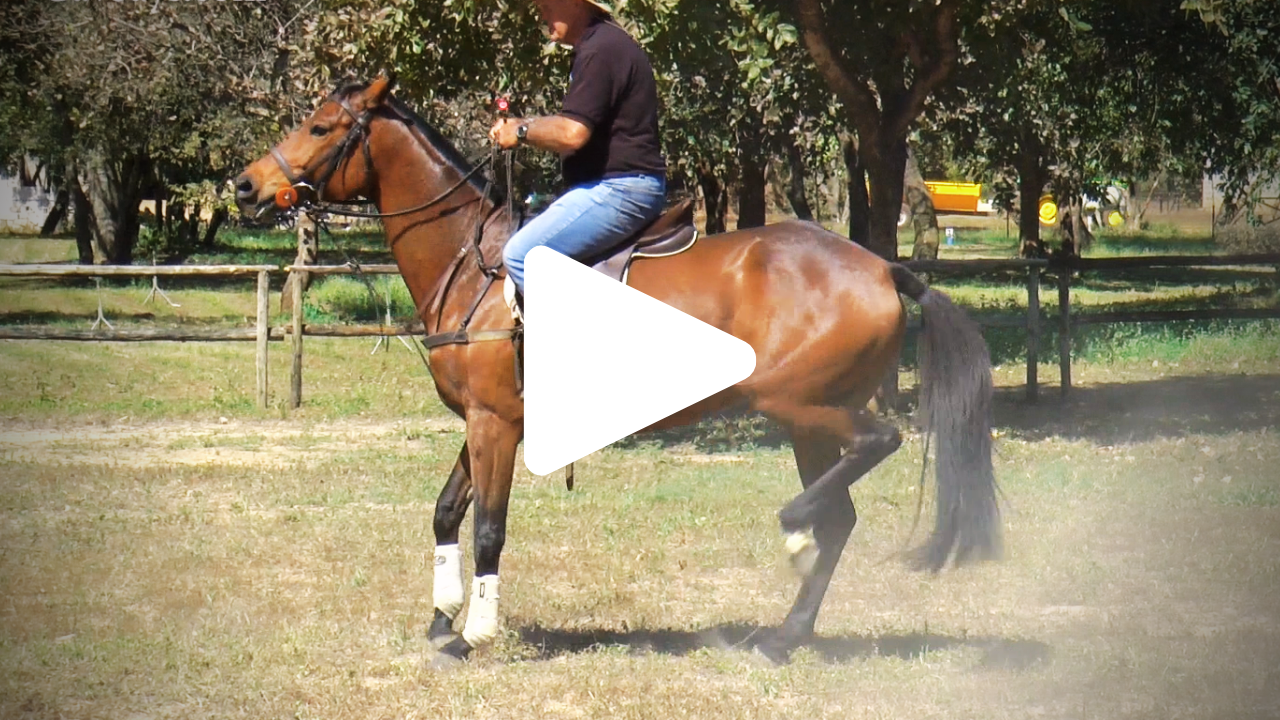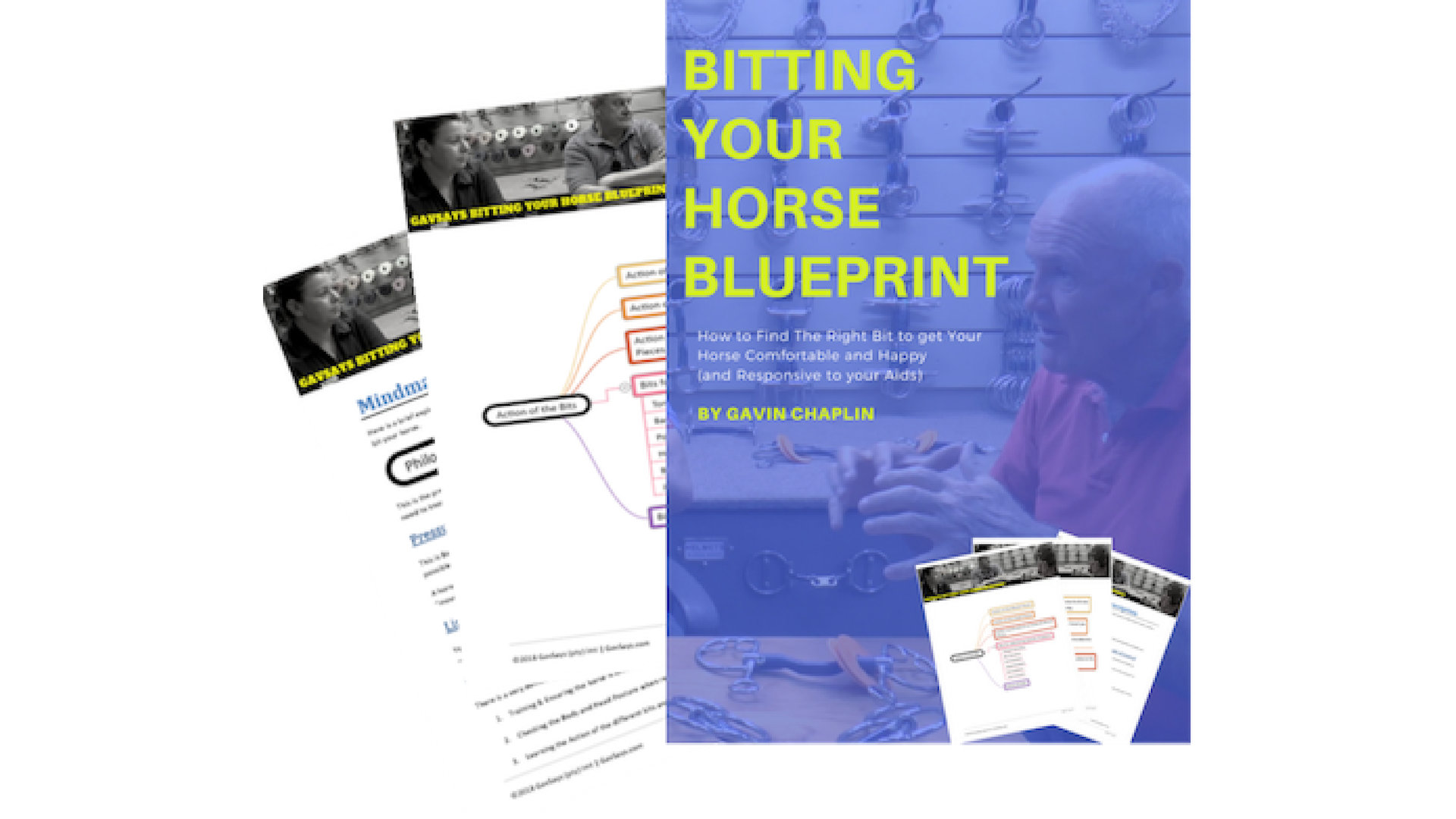What is Stringhalt in Horses?
PLUS The Importance of Assessing a Horse from the Ground
Do you know what Stringhalt in horses is. In this lesson we look at it, and talk about whether a horse can still perform well if they suffer from it.
We ALSO dive in to some very important advice that I am always talking about: Getting Your Horses Checked Medically...
You will have heard me say on countless occasions that when you are going to start training a horse, you also should really make sure that there are no medical problems associated with the horse. That it's not presenting you with a challenge because of a medical problem.
So firstly, always get a vet check before buying...
But also a really great piece of advice is to watch the horse being ridden on the ground... Which is what made me notice the issue that this particular horse we're going to look at, had.
For more in-depth lessons, sign up for a free trial of my "Panic-Free Horsemanship Academy."
What is Stringhalt in Horses?
Transcript:
You will have heard me say on countless occasions that when you are going to start training a horse, you should really also just make sure that there are no medical problems associated with the horse. That it's not presenting you with a challenge because of a medical problem. I think that a really good bit of advice is I love to watch a horse being ridden before I get onto it.
I'm often riding horses for the first time and people are telling me what the problems are. And what I find is that by standing on the ground and watching the horse, you can often pick up things that you will not pick up sitting on the horse. For example, if you're sitting on the horse and it's got a bit of a head shake, you're not quite sure why that is.
But if you standing on the ground, you might notice that it's a little bit fussy with the tongue or something, not sticking it out to anything. Or you might notice that the tongue has pulled back in the mouth. That gives you an idea that the horse is tongue sensitive. All of those little things become apparent when you're watching the horse. And also if you are riding a horse for the first time,
it's also safer for you to see the horse being ridden because sometimes horses react quite violently and it's better to know what's coming and know what you're having to deal with. So from all those points of view, it's really a good thing to first watch the horse being ridden. Now, one really interesting case that I picked up on a mare called Sandy, just watching her, was that she is affected by something called stringhalt.
Let me read to you what it says about stringhalt. It says, horses with a very mild disease may only demonstrate string halt when backing up. And you can see with Sandy that she goes forward quite fine. But when she does back up on her left hind, she is picking that leg up. It says that stringhalt is caused by neuropathy, which is a disease of the nerve that innervates the hind limb.
Now horses can also get stringhalt in the front legs apparently. I've never seen this, but I'm told it can happen and they get it to varying degrees. But it's not to say that a horse with stringhalt can't be a useful horse. There's some really, really good horses that are competing at high levels that have stringhalt, but they demonstrate this kind of leg twitching upwards much more when they backing up than when they moving forwards.
So again, if you've got a horse like this, don't kind of force the horse backwards and if it will back up and it can back up without that stringhalt being a real problem, then by all means do so, but just be aware of the problems that you might be facing. Cause some horses when they do do that, can absolutely not back up.
So one would then know that that's one particular thing that you can't do with that horse. You might just get it to flex and let it go, touch on the reins until it flexes and let it go. So that it learns to give to the light touch of the rein that I'm always talking about. But with most horses you would want them to learn to back up because that gets him very nice and balanced.
But with horses that are really affected with stringhalt, I think that one wouldn't actually go that route. Be interesting for you to watch this mare though, because she can back up. Here's a view in slow motion of what stringhalt looks like. Look at this near side back leg, how it jerks upwards as she's being asked to go backwards. It will always be more evident with a horse moving backwards than moving forwards.
And here it is at a normal speed that you can see what it looks like. The stringhalt Sandy's case is quite mild. So she is actually able to back up, but you will see it's more evident when she's turning to the left-hand side than to the right the, to the right. You can see it's not so evident, but that offside hind leg also just shows a slight little bit of a symptom of stringhalt.
But it's not affected as badly as the near hind. But you will see that if you lessen the pressure, the backwards pressure on the reins, that she is able to make that turn far more simply with less evidence of the stringhalt. It's only every now and then that that leg kind of comes up as you apply backward pressure to do the rollback.
And you can see when she's walking forwards, that she's absolutely fine with no problem whatsoever. So this is a mirror that you can work in the normal way. You can back her up and there she's moving forward now. Absolutely fine.




Comments
Got questions, comments or feedback! Then have your say in the box below...